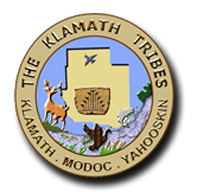CHILOQUIN, Ore. – The removal of four Klamath River dams, the largest dam removal in U.S. history, is on track to be completed by November and reportedly ahead of schedule. The breaching of the John C. Boyle dam on Tuesday, July 30, marked a historic achievement as the four dams on the Klamath River, including Copco 1, Copco 2, and Iron Gate, near completion. The $450 million project strives to restore the river and its ecosystem to its pre-dam condition with a focus on returning salmon, Chinook and coho.
If the reintroduction of salmon is successful, then it will provide once again an ancestral food source to the tribal communities that relied on the annual fish returns in the river as one of their first foods. The Klamath Tribes voiced the need for the dam removals for decades, and now that the project is nearing completion, Klamath tribal leadership and employees in the Natural Resources and Ambodat Departments are working with various state and federal agencies and the Klamath River Renewal Corporation, which is overseeing the project, to assist in the many restoration projects such as revegetation, wetland restoration and the reintroduction of salmon.
“Today, for The Klamath Tribes, marks another culturally significant accomplishment with the breaching of the JC Boyle Dam, which helps further the eventual return of the c’iyaal’s (salmon), taken away from the Tribes in 1907, “ said Klamath Tribes Chairman William Ray, Jr. “The Tribal Nation gives Sepk’eec’a (Thanks) to our Creator, the Lower River Tribes, the Dam Removal Advocates, Collaborators, and all the Personnel who have performed such an instrumental job in making the Klamath River, a natural, free-flowing River again!”
Chairman Ray, Jr. further stated, “We have much more essential restoration work to complete on the Upper Klamath Basin headwaters, watershed, wetlands, and Riparian areas to produce cold, clean, clear water in order to support all fisheries, aquatic species, subsistence, and medicinal plants and roots all critically important to continue supporting the Tribes Culture and Traditional lifeways.”
Revegetation work along the river was halted this summer but will resume in the fall. The work to revegetate the banks of the river will involve more than 17 billion seeds of native plants that were collected and propagated in preparation for the multi-year seeding project. Restoration work is also underway for the Upper Klamath Lake, Sprague and Williamson Rivers, and Upper Klamath Lake tributaries, which will benefit the endangered c’waam and koptu suckers. The Klamath Tribes are directly involved with many of the restoration projects on both the Sprague and Williamson Rivers.
“Ecologically, salmon are a keystone species that have a disproportionally large effect on its natural environment, affecting many other organisms in the ecosystem in a positive way,” stated Ambodat Director Mark Buettner.
The Klamath Tribes, along with the Yurok and Karuk Tribes, are working together in the reintroduction of salmon and assisting directly with the restoration work of the 250-mile Klamath River. The goal is to restore the river and land around it in the Klamath Basin so that it benefits not only the regional tribal communities but also non-tribal communities that rely on the river and Basin for their livelihoods and recreation.


